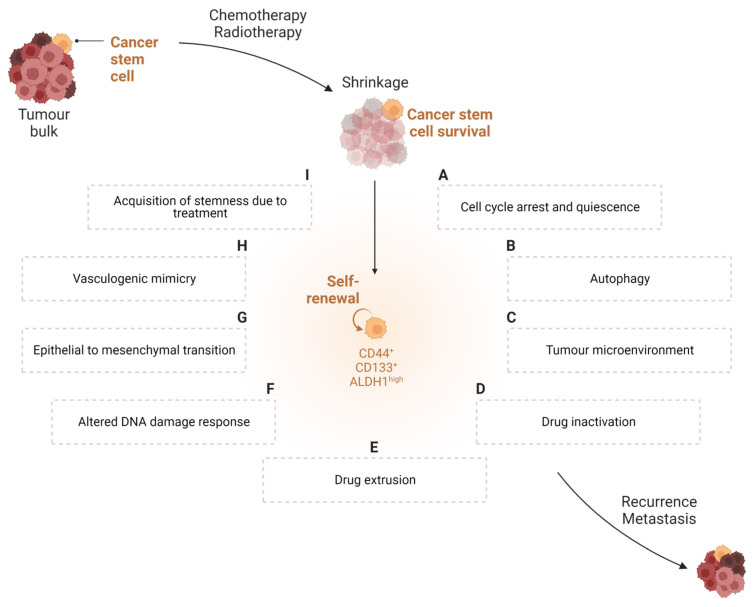Figure 1.
Schematic representation of the different mechanisms applied by CSCs to escape cancer therapy. A small number of cancer cells, known as cancer stem cells (CSCs), have a significant role in the failure of cancer treatment. Despite chemotherapy successfully eliminating a significant amount of the tumour bulk, the main factor for tumour recurrence and metastasis is the existence of CSCs that are resistant to chemotherapy and can regenerate themselves. CSC-mediated therapy resistance appears to be attributed to different mechanisms: cell cycle arrest and quiescence (A), autophagy (B), interactions with the tumour microenvironment (C), drug inactivation (D) and extrusion (E), alteration of the DNA damage response (F), epithelial-to-mesenchymal transition (G), and vasculogenic mimicry (H). Moreover, stemness-related therapy resistance could be induced by cancer treatment itself (I).

